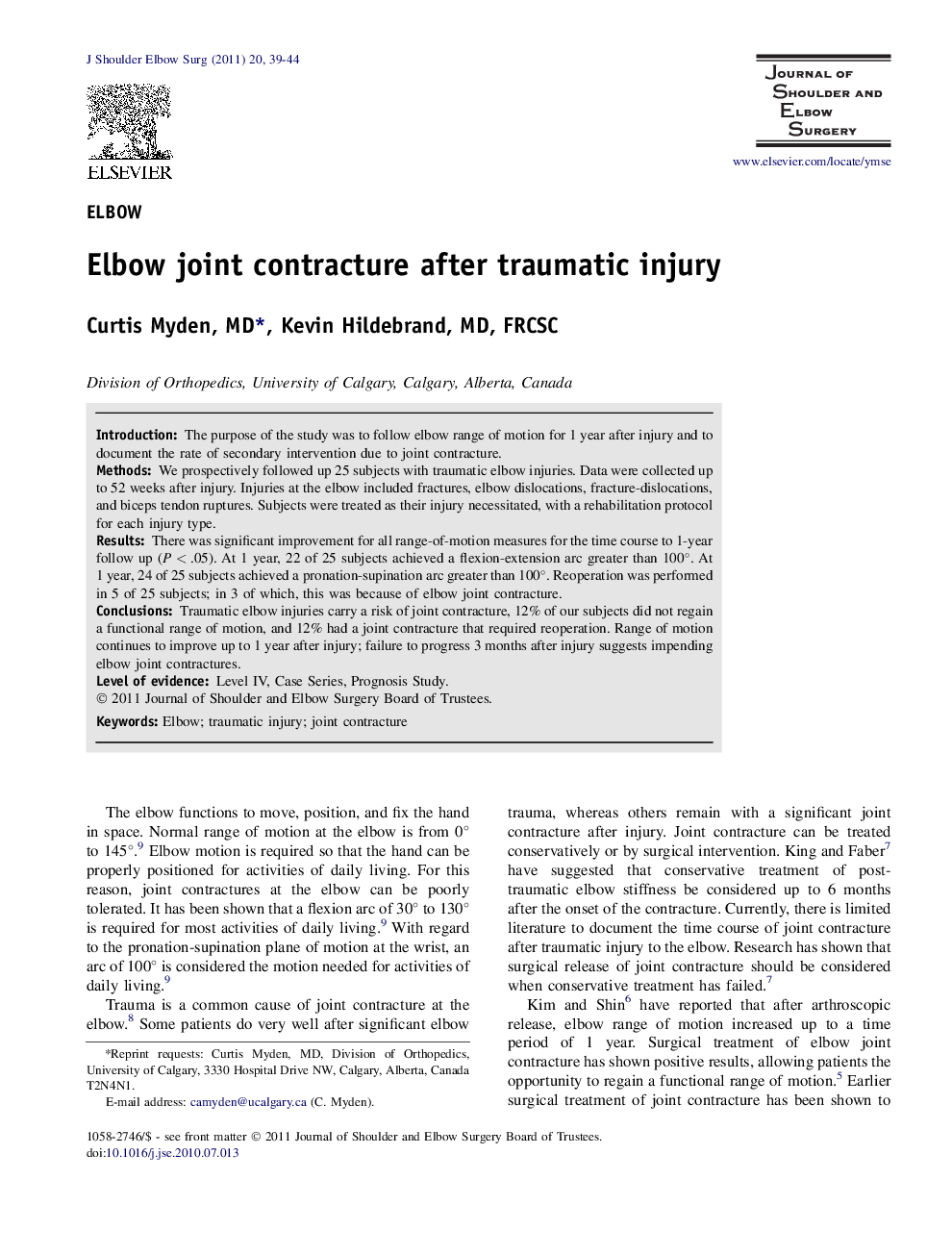| Article ID | Journal | Published Year | Pages | File Type |
|---|---|---|---|---|
| 4074934 | Journal of Shoulder and Elbow Surgery | 2011 | 6 Pages |
IntroductionThe purpose of the study was to follow elbow range of motion for 1 year after injury and to document the rate of secondary intervention due to joint contracture.MethodsWe prospectively followed up 25 subjects with traumatic elbow injuries. Data were collected up to 52 weeks after injury. Injuries at the elbow included fractures, elbow dislocations, fracture-dislocations, and biceps tendon ruptures. Subjects were treated as their injury necessitated, with a rehabilitation protocol for each injury type.ResultsThere was significant improvement for all range-of-motion measures for the time course to 1-year follow up (P < .05). At 1 year, 22 of 25 subjects achieved a flexion-extension arc greater than 100°. At 1 year, 24 of 25 subjects achieved a pronation-supination arc greater than 100°. Reoperation was performed in 5 of 25 subjects; in 3 of which, this was because of elbow joint contracture.ConclusionsTraumatic elbow injuries carry a risk of joint contracture, 12% of our subjects did not regain a functional range of motion, and 12% had a joint contracture that required reoperation. Range of motion continues to improve up to 1 year after injury; failure to progress 3 months after injury suggests impending elbow joint contractures.
